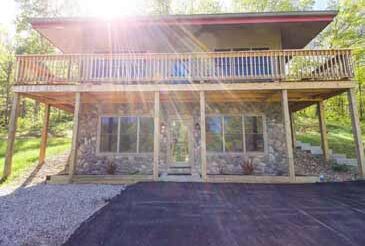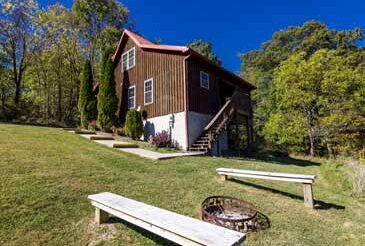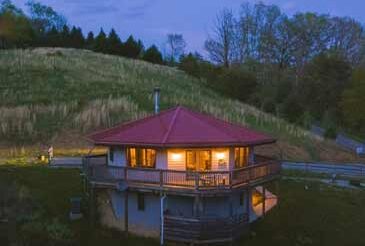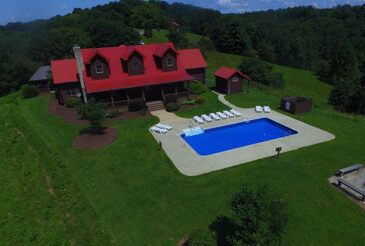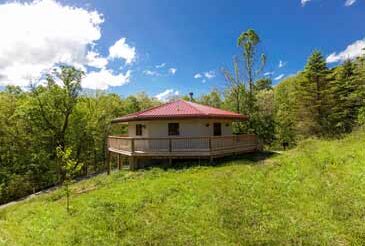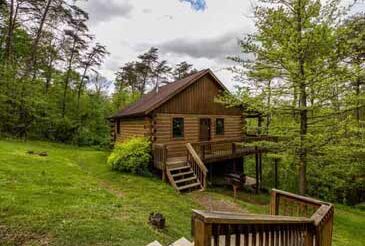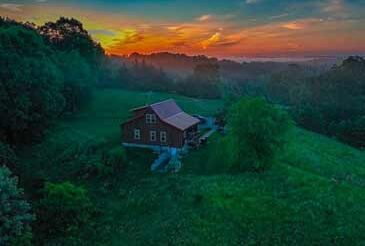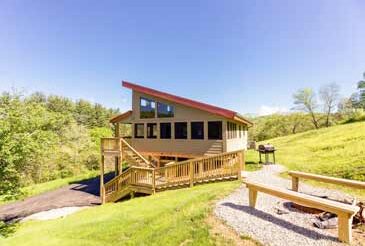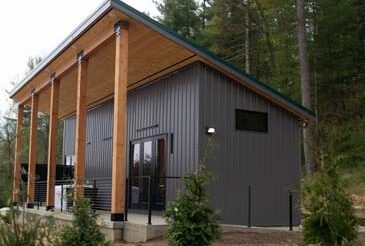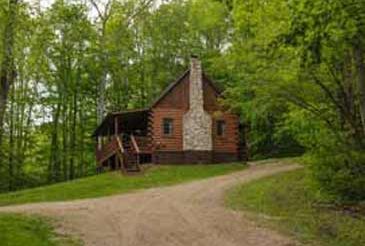With its spectacular natural rock formations, Hocking Hills State Park is one of the most picturesque areas in the country. Old Man’s Cave, the most popular area of the park, features a gorge cut into 150 feet of Blackhand sandstone—you can literally read the natural history of the area in the exposed layers of the earth’s surface. How did Old Man’s Cave and the other gorges, cliffs, and waterfalls come to be formed in the southeast corner of Ohio? What forces combined to create the stunning 2300-acre park seen today?
Blackhand sandstone at Hocking Hills State ParkThe park’s unique landscape and natural rock formations were caused by a combination of the tectonic plate movement, weathering, and natural erosion over a very long time. It is hard to believe now, but more than 300 million years ago, the entire region was covered in warm, shallow water. For many millions of years, currents deposited loose sand on the ocean floor, and when the water drained, the sand combined with silica or iron oxide to form sandstone. The rock formed in three layers: hard top and bottom layers, with a softer middle layer. Then, movement of the tectonic plates that underlie the Appalachian Mountains caused the landscape to gain form.
About 10,000 years ago, glaciers moving north of the area poured their water over eastern Ohio, carving tunnels and gorges in the soft middle layer of sandstone and creating the recess caves that make the park famous. Erosion is still taking place today as water from nearby creeks and rivers moves through the park every spring. The glacier also brought cooler temperatures, allowing new trees, like hemlocks, birches, and Canada yew, to take root.

It is unknown exactly when the first humans inhabited the region, but some evidence suggests that it was as long as 7000 years ago. The Adena tribe, which lived in Ohio around 2000 to 3000 years ago, left its mark on the area, and they were followed between the 1300s and the 1700s by the Fort Ancient Indians, the Wyandot Indians, and other Native American tribes. In fact, the term Blackhand, used to describe the sandstone, comes from a figure of a human hand early Native Americans inscribed in soot on a cliff face, perhaps as a navigational aid.
Pioneers moved into southeast Ohio in the late 18th century, finding abundant natural resources including many game animals. In the early 19th century, the early settlements expanded and the first powder and grist mills were constructed. Two charcoal iron furnaces were built, and iron extracted from the sandstone was used for farm tools and weapons. Later, coal was discovered, adding to the region’s rich natural resources.

As the population grew, more people began to explore the caves and gorges for recreation, and in 1924 the state purchased a 146-acre piece of land that contained Old Man’s Cave, officially creating a park overseen by the Department of Forestry. Throughout the 1920s and 1930s, more land was purchased and roads and paths were constructed, and in 1949 the Department of Natural Resources and the Division of Parks were formed. The current Hocking Hills State Park is made up of six connected areas: Ash Cave, Cantwell Cliffs, Cedar Falls, Conkle’s Hollow, Old Man’s Cave, and Rock House. Finally, in 1972, facilities including cabins and a dining lodge were added, creating the recreational paradise thousands of people enjoy every year.
To experience the natural wonders first-hand, plan your visit to Hocking Hills State Park and check out one of our cabins near Old Man’s Cave.
Sources:
http://en.wikipedia.org/wiki/Hocking_Hills_State_Park
